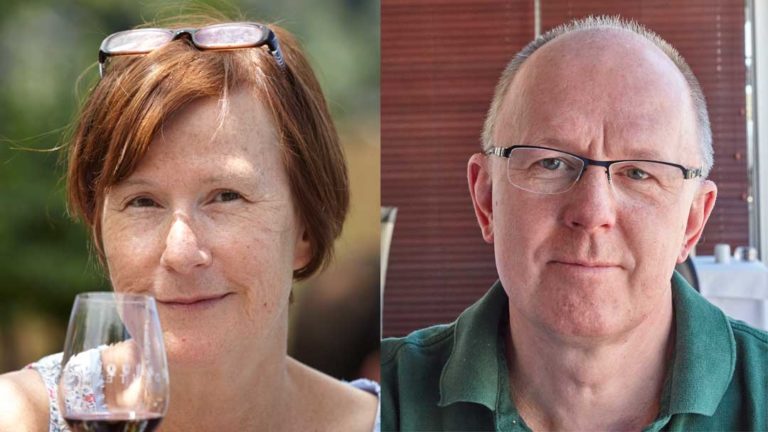
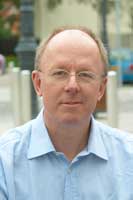
 50 wine producers from Cahors, each with three wines. It was a tough morning today… To taste a large number of wines in a short period of time can be straining. Is straining. Some people say that you can not taste more than a handful of wines at the time to do them justice. They say for instance that trade tastings with 100 or more wines are pointless. We don’t agree.
50 wine producers from Cahors, each with three wines. It was a tough morning today… To taste a large number of wines in a short period of time can be straining. Is straining. Some people say that you can not taste more than a handful of wines at the time to do them justice. They say for instance that trade tastings with 100 or more wines are pointless. We don’t agree.
It is all a question of what your objective is with the tasting. If you want to analyse the minute details of each wine and describe all the nuances then, of course, it takes time and you can not do many. But in many situations it is doubtful if there is any point to long and detailed descriptions of wines. Describing many different fruits and spices that apparently can be found in the wine. Some of which you might hardly have heard of and much less know how they smell or taste. How does sandalwood smell? Or not-quite ripe mirabelle plums? You tell me!
So today I had some 150 cahors wines to taste in little over two hours. I admit, I did not manage all of them. Perhaps half (including a quick lunch). I decided from the start that I would not be taking detailed notes. Instead I asked myself “what do I want to get out of this tasting?”
Well, I wanted to identify those wines, or perhaps rather those wine producers that I liked and that I would like to recommend to you, you who read the BKWine Brief and BKWine Magazine. I think I might serve you better by giving you a few suggestions for good producers to try rather than giving you pages of how the wines tasted. What I think is black cherries, minerals, or cedar wood might not be what you think it is. (Without wanting to become too relativist!)
So what I tried to do was to focus on a few important parameters: fruit, tannins, acidity, balance, elegance, length, body (power) are perhaps the main. In addition I wanted to judge the “style” in some vague categories: modern / international, traditional / classic, elegant fruity, to lay down, to drink young etc.
Working like that it is quite easy to wade through a large number of wines rather quickly even if after a while your nose and taste buds get a bit “tired”.
When I get the time I hope to put together a list of my selection, the wines and producers I particularly liked. And I hope that a few good names will serve you better than lines of adjectives.
In just a few days time we will be leaving for south America, Argentina and Chile, for this year’s first wine tour. I am sure that during the two weeks that we will be there we will taste well over 150 wines! It will be really exciting and fun to go there. You will no doubt be able to read more about it in our travel blog sooner or later.
We have also just finalised most of the wine tour schedule for the autumn. Apulia (Puglia) at the very southernmost tip of Italy is a new destination. A wonderful place to travel to! Alsace is back after a few years’ absence. And there will be several classics: Bordeaux, Champagne, Tuscany, Amarone / Valpolicella, Rhone, Languedoc (staying in a chateau), Piedmont (with truffles) and the Douro Valley. Will be a busy autumn!
Britt & Per
PS: Recommend to your friends to read the Brief!
What’s on at BKWine Tours
- Chile & Argentina, 4-19 February
- South Africa, 1-11 March
- Bordeaux, 22-26 May
- Bordeaux, 18-22 September
- Douro Valley, Portugal, 23-27 October
For more information please contact us on email or on phone (we’re on French time), or go to our wine travel site on www.bkwinetours.com!
We also make custom designed wine tours – on-demand tours for you and a group of friends, for your company (maybe to scout new winegrowers?), for a special event… We can combine winery visits and wine touring with other activities: gastronomic workshops, visit to an oyster farm, truffles hunting, cheese making, and more. More info on the custom designed and bespoke BKWine wine tours and travel here!
Wine tours in Finnish: We also do wine tours in Finnish. And in German, Norwegian, Spanish…
Do you want the latest news and updates on our wine travel activity? Subscribe here! (Second alternative BKWineTours.com)
From the World of Wine
Copper harm beneficial bacteria
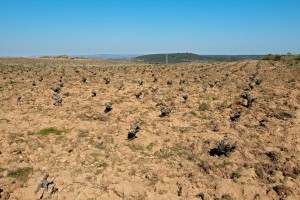 Copper is an effective way to fight the fungal disease mildiou. However, spraying too much copper in the vineyard is not good for the soil and the water and this has been known a long time. Now researchers have discovered another problem with copper.
Copper is an effective way to fight the fungal disease mildiou. However, spraying too much copper in the vineyard is not good for the soil and the water and this has been known a long time. Now researchers have discovered another problem with copper.
Spraying copper can affect the bacterial flora and the yeast population present on the grapes. Guilherme Martin, a doctorate student at the University of Bordeaux, has investigated several different vineyards around Libourne and he has identified 44 different types of bacteria.
Some of these bacteria have the ability to protect against rot so it is a good thing to have these on the grapes. By spraying copper on the grapes you risk both to reduce the amount of bacteria and their beneficial properties. Using copper as copper sulphate apparently affects the bacteria more than using copper oxide.
Copper is permitted in organic vineyards but not more than 6 kg per hectare and year. For the sake of the environment, less should be used but certain years this is very difficult, like 2012 for instance. Read more on this on La Vigne.
We taste a range of champagnes from Bruno Paillard, to our satisfaction
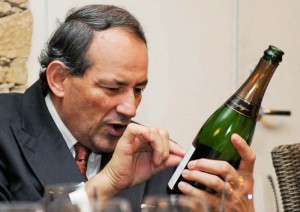 Bruno Paillard, in person, was recently in Stockholm for a tasting of his champagnes, organised by the wine importer Tryffelsvinet. It is always particularly interesting and exciting to taste wines together with the producer. You can get a totally different understanding of the how:s and why:s when you have the person in front of you and you can ask questions and discuss. And the champagnes? Exciting wines, some unusual ones, and some absolutely delicious. BKWine’s reporter in Stockholm, Ulf Bengtsson, reports on the champagnes and the tasting.
Bruno Paillard, in person, was recently in Stockholm for a tasting of his champagnes, organised by the wine importer Tryffelsvinet. It is always particularly interesting and exciting to taste wines together with the producer. You can get a totally different understanding of the how:s and why:s when you have the person in front of you and you can ask questions and discuss. And the champagnes? Exciting wines, some unusual ones, and some absolutely delicious. BKWine’s reporter in Stockholm, Ulf Bengtsson, reports on the champagnes and the tasting.
Chateau Lestrille wins award in wine tourism
Best of Wine Tourism is a prestigious international competition that promotes wine tourism initiatives. One of the awards for this year has been given to Chateau Lestrille, one of the estates we often visit on our Bordeaux wine tours. The chateau is run be the young female winemaker Estelle Roumage, with the help of her husband Martin Fueyo. (Martin also happens to double as guide on some of our wine tours. It is hard to imagine someone better qualified!) The award Chateau Lestrille won was for their innovative initiatives in wine tourism. Read more on our travel blog!
Are you interested in learning more about wine or about wine and photography?
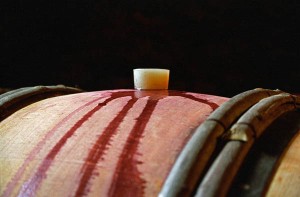 We are thinking about two new travel projects: a wine tour including a wine course; and a wine tour combined with a photography workshop.
We are thinking about two new travel projects: a wine tour including a wine course; and a wine tour combined with a photography workshop.
The “wine course” project is simply a “normal” wine tour with many visits to wine producers combined with a number of more structured sessions of teaching wine theory as well as wine tasting.
The “photography” project is also a normal wine tour but one that we combine with photography workshop sessions. During the day we go round visiting vineyards, and take pictures, and at the end of the day we have workshops looking at the practical and theoretical sides of photography. That we put in practice the following day. (BKWine also has, as you may know, a photography branch: www.BKWinePhotography.com).
Both tours would thus be “normal” wine tours but with some extra contents. Both tours would probably be in Bordeaux. But we need to know if there is anyone interested before we launch the projects. Let us know if this sounds interesting to you and if you might be interested in coming on such a tour!
Château La Reyne L’Excellence 2010, Cahors | Britt’s Wine of the Month
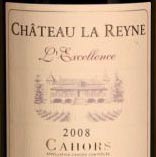 Cahors is in the wine region called South-West in France. A region well known for its duck and foie gras among other things. Château La Reyne l’Excellence is a powerful wine with a warm feeling and a good structure, soft tannins and a pleasant freshness. It is a wine you can keep in your cellar for another 10 years if you like but you can also enjoy it right away at the dinner table, for example with a grilled duck breast.
Cahors is in the wine region called South-West in France. A region well known for its duck and foie gras among other things. Château La Reyne l’Excellence is a powerful wine with a warm feeling and a good structure, soft tannins and a pleasant freshness. It is a wine you can keep in your cellar for another 10 years if you like but you can also enjoy it right away at the dinner table, for example with a grilled duck breast.
The grape used is malbec. Black fruit dominates the nose but you will also find some chocolate and a discreet oak flavour. Everything is in perfect balance. Château La Reyne is a family owned vineyard with 30 hectares of vines.
Porto, a city worth visiting
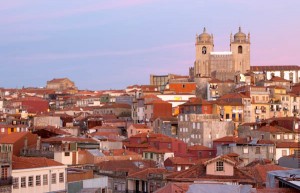 Porto, at the mouth of the Douro River, is an interesting city. Its twin across the Douro, Vila Nova de Gaia, is where you find all the old port “lodges” (it is no longer an obligation to be there for a port producer). Porto itself is a superb city to visit, with its old city centre, river-side walk filled with restaurant and cafés and beautiful views.
Porto, at the mouth of the Douro River, is an interesting city. Its twin across the Douro, Vila Nova de Gaia, is where you find all the old port “lodges” (it is no longer an obligation to be there for a port producer). Porto itself is a superb city to visit, with its old city centre, river-side walk filled with restaurant and cafés and beautiful views.
It is also the perfect starting point for a wine tour to visit the vineyards of the Douro Valley wine regions. We have recently published on our travel blog, the BKWine Travelog, a few videos and pictures of Porto to give you an impression of what it is like. The danger is that you will want to go there!
We are all French, aren’t we?
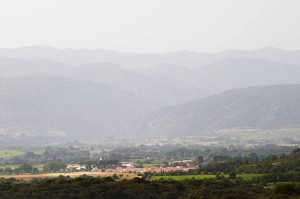 Renaming the French table wines to Vin de France was an ingenious move. They were formerly called vin de table, wines without geographical origin. “France” is a brand name that goes down well in most countries and big wine firms with a flair for marketing have been quick to take advantage of this. But now a potential fight is underway.
Renaming the French table wines to Vin de France was an ingenious move. They were formerly called vin de table, wines without geographical origin. “France” is a brand name that goes down well in most countries and big wine firms with a flair for marketing have been quick to take advantage of this. But now a potential fight is underway.
Producers of IGP Pays d’Oc (the old Vin de Pays d’Oc) announced some time ago that they will from now on emphasize not only their Languedoc origin, but also their French origin.
Starting this year all promotional material about these wines will mention their double origin, IGP Pays d’Oc and Vin de France. They have even come up with a slogan that reads: “Vin de France par naissance, Vin de qualité par conviction” which translated means “French by birth, quality wine by conviction.”
This is definitely a kick in the head for the The Vin de France category (which according to the EU definition is not quality wines). The Pays d’Oc producers export a large part of their production and do not like the idea that someone should have the exclusive right to be French. Read more on Vitisphere.
Which are the best wine tour destinations?
The “best” wine travel destination is of course a matter of personal taste. If one wants impressive chateaux, famous names, beautiful landscapes, not yet discovered talents, innovative winemakers etc. Every wine region is different. It is always interesting to see what others think are their preferred travel destinations. Recently we have seen to such top rankings: Top ten wine tour and travel destinations in 2013 according to the Wine Enthusiast and Vinavisen’s selection of wine districts to visit this summer. Follow the links to read more on our travel blogs. But there was one thing, an important thing, missing on the Wine Enthusiast’s list of destinations!
Fat Bastard on video
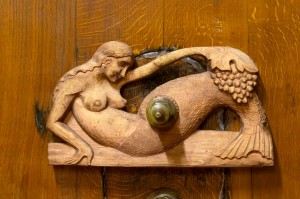 Arrogant Frog and Fat Bastard are two rather unpleasant brand names for unpretentious French wines. And they happen to be big sellers on the export market. If the names show foreigners’ idea of the French or just what the French think is the opinion of them in other countries, we really don’t know.
Arrogant Frog and Fat Bastard are two rather unpleasant brand names for unpretentious French wines. And they happen to be big sellers on the export market. If the names show foreigners’ idea of the French or just what the French think is the opinion of them in other countries, we really don’t know.
Now the producer behind the Fat Bastard, Gabriel Meffre in the Rhone Valley, is launching five small videos on YouTube. They are in English and target the 35 countries where the wine is sold.
The first and the second videos are already launched and the remaining three will be in February and March. They continue on the theme of “how foreigners view the French”, that is as a whining, arrogant, bragging seducers (not necessarily all at once of course). Funny? Well, I’m a little hesitant about the first two but maybe the next three will be better:
You can see the first video here and the second here.
Alsace, why don’t we see more of it in France?
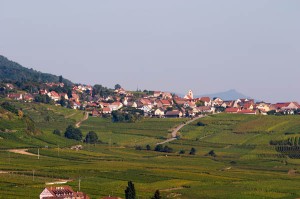 They make wonderful wines in Alsace and the landscape is wonderfully beautiful. It has long been a popular wine region in Sweden (at least as long as I lived there) and in other countries but not so much in France. It is a little seen wine region in France. Rarely on wine lists in restaurants. I have always wondered why.
They make wonderful wines in Alsace and the landscape is wonderfully beautiful. It has long been a popular wine region in Sweden (at least as long as I lived there) and in other countries but not so much in France. It is a little seen wine region in France. Rarely on wine lists in restaurants. I have always wondered why.
We have just planned for a wine tour to Alsace this autumn (long since we did an Alsace tour) and that made me think of this again. Why do we drink so little Alsace in France? Read about that and about the Alsatian wines and food (and the tour) on our travel blog. Ahh, a crispy tarte flambé with a glass of riesling! Or perhaps a gewurz with a munster?
Satellites help the wine grower
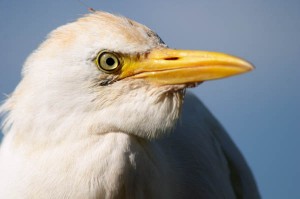 To have fine, healthy grapes when it is time to pick means everything, or at least a lot, to the quality of the wine. And that means that you must ensure that both the vines and the soil they grow in are in a good condition. The more the wine grower knows about the state of the vineyard, the more he can control the work and do the right things.
To have fine, healthy grapes when it is time to pick means everything, or at least a lot, to the quality of the wine. And that means that you must ensure that both the vines and the soil they grow in are in a good condition. The more the wine grower knows about the state of the vineyard, the more he can control the work and do the right things.
A tool called e-terroir is now available to winemakers in the Loire Valley. E-terroir uses satellites to identify individual vineyards and different plots and their characteristics. The wine grower receives on his computer information about the quality of the soil, the depth of water, drainage, possible risk of diseases and malnutrition, and much more.
This information can reduce spraying in the vineyard and helps the grower to plant the right grape in the right soil and grafting it on the most suitable rootstock.
Read more here La Vigne.
What do you actually do on a wine tour to XYZ?
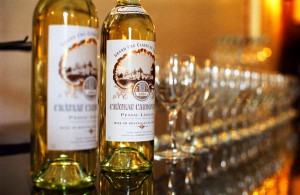 There is a new section on our travel site where we publish some examples, samples, of wine tour programs, just to give you a feeling for what it can be like. We have chosen some of our popular wine tour destinations and give you an overview. Read more on our travel blog on these new sample itineraries:
There is a new section on our travel site where we publish some examples, samples, of wine tour programs, just to give you a feeling for what it can be like. We have chosen some of our popular wine tour destinations and give you an overview. Read more on our travel blog on these new sample itineraries:
Amarone wine tour, with Valpolicella and Soave in Veneto. Not sure if we should call it an Amarone tour (that’s just a wine style), or a wine tour to Veneto (few people know Veneto), or Valpolicella. Whatever. It is in any case one of our most popular destinations.
Champagne, the most festive wine tour! Luxurious wines and luxurious lunches.
Languedoc, the south of France. Or if you prefer, The New World of France.
The Douro Valley, a spectacular wine region. It is quite incomprehensible how anyone can have come up with the idea to make wine here. But boy, are they good! And the landscape is stunning.
Sicily, the wonderful wine island. With a surprising, and delicious, wealth of wine and food.
Protest party in Alsace
10 or 12 producers in Alsace recently formed a group called Groupe Transverse Alsace 2015. The group believes that the wine industry in Alsace needs to be reformed. The members are well known producers such as Jean-Michel Deiss, Paul Blanck, Jean-Pierre Frick, Marc Tempe, Jean-Claude Rieflé and others.
Alsace is an old-fashioned wine region, they say. Wines are sold too cheaply, they think, a fact that undermines Alsace as a brand name. Too much of Alsace wines are industrial wines and the link to the terroir, the origin, is gone. They ask themselves what will happen when wines without origin, the new category Vin de France, start making wines from Riesling, Gewurztraminer, Pinot Gris and other Alsace grapes and mention the grape on the label.
The latter issue has been under discussion since the table wines (now Vin de France) two years ago got permission to mention the grape on the label. This was not allowed before. Alsace producers find it difficult to accept Riesling wines that do not come from Alsace. The group has a blog.
The blend, the cuvée, is one of the secrets of the winemaker
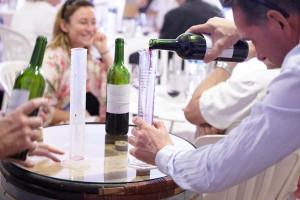 But it is not much of a secret. Most winemakers are very happy to explain exactly what it is they do. The blending in the wine cellar is one of the winemaker’s most important decisions. How much of each grape variety? A bit more of a touch of oak barrel? Or press wine?
But it is not much of a secret. Most winemakers are very happy to explain exactly what it is they do. The blending in the wine cellar is one of the winemaker’s most important decisions. How much of each grape variety? A bit more of a touch of oak barrel? Or press wine?
On some wine tours you can do it yourself. Your very own blend. With guidance from an expert. So how does your blend stack up against the winery’s own blend? Read more on what it is like participating in a wine blending workshop on a wine tour on our travel blog.
Champagne is like haute couture?
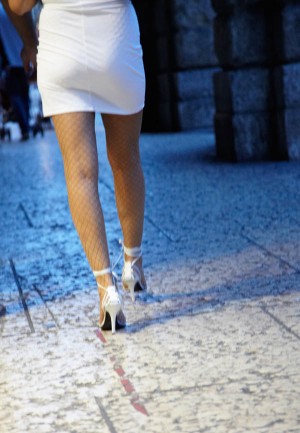 More and more champagne houses mention the disgorging date on the label. A champagne often spends several years in the cool cellar of the producer, resting on the dead yeast from the second fermentation. Removing the lees is called disgorging.
More and more champagne houses mention the disgorging date on the label. A champagne often spends several years in the cool cellar of the producer, resting on the dead yeast from the second fermentation. Removing the lees is called disgorging.
It is quite fashionable today to put this date on the label, along with information about the grapes, the reserve wine and perhaps which villages the grapes come from. This is relevant information for the consumer, some houses think, but not all.
Pommery recently launched their new prestige Champagne called Apanage. And Pommery is not into consumer education.
Nathalie Vranken, who owns Pommery with her husband Paul-François Vranken, says to Drinks Business that Pommery sells a dream and that putting the disgorging date on the label would be like asking Karl Lagerfeld which fabric he is using.
She does not believe that the customers care and she is probably right. Most of them do not. But for some houses and some producers the information they give their customers is a way of showing that champagne is a serious wine and not only a luxury product.
Wine events calendar
Send us an email if you have some event you want on the calendar.
Don’t be an egoist! Share with your friends and other wine enthusiasts! Forward the Brief to your friends! Suggest that they sign up for a free subscription !
© Copyright BKWine


